What the Olympic Sports teach Photographers: Archery
31/07/12 15:09 Filed in: Photography & Art
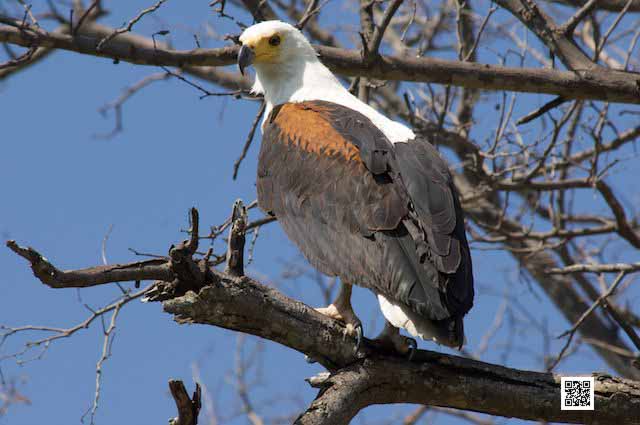
Be focused on what you are aiming for. Set yourself a goal, focus and go. When you feel your hand shaking when pulling the string, take the bow down and rest. Then focus again and shoot.
Ute Sonnenberg for www.rohoyachui.com
What the Olympic Sports teach Photographers: Boxing
30/07/12 13:30 Filed in: Photography & Art
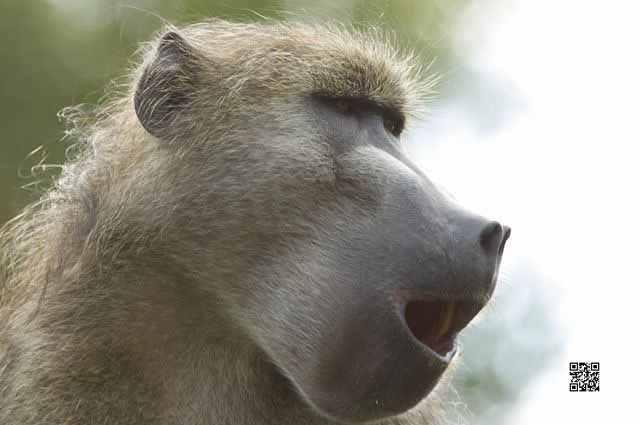
Don’t you feel sometimes like boxing your way through thick walls to success? Think of your footwork and stay flexible and be fast in response, move quickly and protect yourself. Don’t give up to easy, you can get up and win. Be careful with your health and don’t take unnecessary risks. A picture of people shooting with guns looks the same 50 meters behind the front line. You don’t want to be famous, because you were knocked out.
Ute Sonnenberg for www.rohoyachui.com
Who Inspired Who - Intellectual Property in Photography
26/07/12 20:41 Filed in: Photography & Art
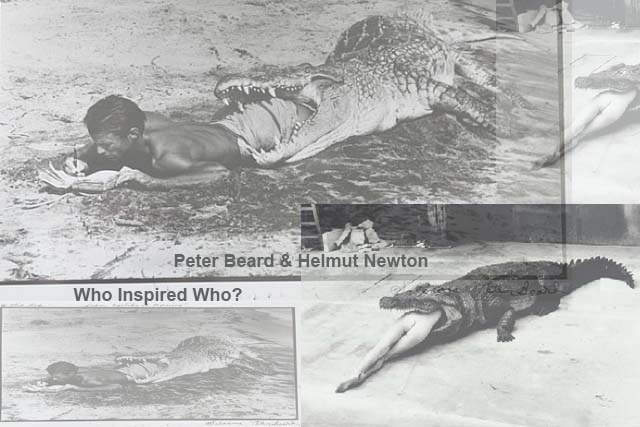
Have you ever asked yourself when seeing art who might have been the inspiration for this artwork? Was there somebody who did something similar before this artist picked it up and created his/her artwork? Pablo Picasso paid respect to Vincent van Gogh in one of his early paintings by painting in Van Gogh’s style. He had seen the greatness of Van Gogh before others did.
An interesting “couple” are also Charlie Chaplin and Stanley Kubrick. There is a great documentary about Stanley Kubrick called “A Life in Pictures” from 2001 and another great documentary about Charlie Chaplin called “Charlie: The Life and Art of Charles Chaplin” from 2003. I watched first the Kubrick documentary and it was absolutely amazing and impressive. Only later when I watched the Chaplin documentary I was surprised how influential Charlie Chaplin was and how much of his artistically groundbreaking film work could be found in Kubrick’s work.
The same happens in photography. One of the photographs above is from Peter Beard, “I’ll Write Whenever I can” and shows him with a dead crocodile in the typical Peter Beard style of presenting his work. The other photograph is from Helmut Newton, “Crocodile Eating Ballerina” from 1983. Seeing the age of Peter Beard in the image, it looks like he was first with the crocodile posing.
How often does the same as with these two pictures happen? In this Internet social media age probably a million times. We just don’t know, because not every artwork becomes as famous as the art from Beard and Newton. But that doesn’t mean that we shouldn’t care about the intellectual property of others, only because they might never find out. Treat them the way you want to be treated. Credit your sources and protect your creations.
Happy sourcing and creating. Be inspired.
Ute Sonnenberg for www.rohoyachui.com
How to Photograph Leopards
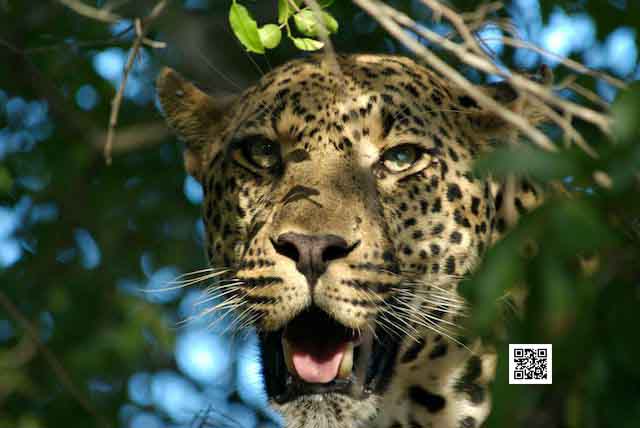
It might sound far-fetched, but Quantum Physics is the starting point to understand and photograph leopards. Everything is made of the same energy and everything is connected to everything else is an essential lesson from Quantum Physics, that applies to us as it applies to leopards, a coffee mug and the car we are driving in. Because we are all made of the same energy, we are also all connected and communicate on the energy level all the time, mostly without being conscious about that, although we use phrases like “we are on the same wavelength” with somebody or not. So somehow we know that we are communicating on frequencies like radio channels and some people can receive the signals and some don’t or receive only distorted messages. That means that the energy we are made of vibrates or moves in different frequencies, higher or lower frequencies, faster or slower. We might experience situations where we immediately have a good “click” with somebody. Most likely this persons communicates on energy level on the same frequency as we do. When we experience a situation that we find it difficult to be in the presence of a certain person for too long, because we start to feel tensed and restless, like pressure is building up, we might have an encounter with somebody of a high frequency energy and our energy frequency finds it hard to adjust to the same level. In the other direction to a lower frequency the adjustment is easier and mostly not experienced as demanding or unpleasant. But what does all that have to do with photography and especially leopard photography?
An easy answer could be, wait until you look one into the eyes, but it is helpful to know what happens when you are in the lucky position to be near a leopard and able to spend time with the animal. The difference in photographing wildlife in general and leopards in particular is the very high frequency energy this incredible cat has. Being conscious about that helps a lot when photographing them.
Imagine you are on a game drive and suddenly there is the leopard you were looking for already for days, right in front of the vehicle on a termite mount. Now just shoot away. Don’t think. Let the adrenaline from the excitement out and also take the pictures you can get, before the leopard possibly disappears. This moment might take a minute or two. You will feel when the excitement has settled and you will sit more relaxed in the vehicle. First thoughts of how to photograph the leopard properly will pop up. The next thing might be a feeling of impatience and negative thoughts about the light, the not doing anything animal, chaos with the camera settings, maybe a bit cursing, annoyance and eventually anger why we are still here with this leopard, enough leopard. This is a very important moment. When you decide to leave the sighting, you will miss the chance to connect with the animal and to get the most beautiful photos. All the negative thoughts and the physical reactions of feeling uncomfortable are caused by the difference in energy vibration/frequency. The leopard as a high frequency animal is just sitting there and doing nothing, only sending out on his/her frequency and your energy is trying to tune in to the leopards energy frequency. This tuning process causes the uncomfortable feeling. It will disappear as soon as you are tuned in and from there its as easy as what to photograph this amazing animal and to get the most beautiful leopard images.
Be patient. Stay with the animal and give yourself the time to tune in. As soon as you are tuned in on the leopards frequency the whole “energy situation” on the sighting will calm down and all present parties will connect on the same level. The leopard will start doing his/her thing and the most incredible photo opportunities will occur.
Try it at home with your cat and get trained for the big cat!
Ute Sonnenberg for www.rohoyachui.com
Recipe for a Soul Feeding Photo Adventure

Ingredients
1 or more camera(s)
1 or more lens(es)
1 or more fully charged battery(ies)
1 or more memory cards/films
1 laptop or other backup medium
1 or more power adapter(s)
1 card reader or cable for image upload
1 or more places to stay
1 or more reliable guide(s) depending on destination
1 or more camera bag(s)/backpack
comfortable clothes for all possible weather conditions
food & beverages
well planned logistics and accommodations
visas and permits if necessary
maps/GPS for navigation
well considered security preparations and backup plan
plan B if plan A cannot go through
emergency plan
passion, inspiration & a high spirit
Method
Listen to your heart when deciding on the destination of your photo adventure; the park in your town, your grandmother’s garden, the beaches of Hawaii or the African savanna, no matter how close to home or how far away, follow the choice of the heart.
Take all technical ingredients, check them, clean them and decide on the cameras and lenses depending on the destination and subject. When you made your choice put the technical equipment in the camera bag or backpack.
Add the environmental ingredients. Make sure that everything is organized and set in a way that you are safe and comfortable.
Finish with putting the cherry on the cake; the ingredients passion, inspiration and high spirit.
Enjoy your soul feeding photo adventure.
Ute Sonnenberg for www.rohoyachui.com
How to Organize Your Loads of Photo Safari Images

Digital Photography is a great thing. It makes us shoot away, not thinking and worrying too much, just snapping and enjoying this incredible hobby or profession. But there is a little downside. How to handle all these images?
Many of us are struggling with this part of photography and when you’ve got down the road for a while with now good idea how to do organize your images, it becomes more and more frightening to start doing it properly and organizing the archive.
Here some tips that might help getting some structure into the huge amount of images we are taking and taking away the fear of doing it.
Reflect & Anticipate.
Before you even start taking images think of how you want to find them back and/or think of how you usually find things back. Everybody has got his/her own way of thinking and remembering, the way we go through the drawers of our brain for all sorts of things. Some have a photographic memory others are good with numbers. There are plenty of different ways of thinking. Reflect and identify your way of thinking and remembering. You might like to store the images chronologically by making folders like “day 1 of photo safari”, “day 2 of photo safari” or you rather like to make folders per subject like “lion”, “leopard”, “cheetah” and “landscape”. Only you know what suits you best and fits your thinking patterns. Reflect on that and make an important first step to organize your images.
Then anticipate. When you are for example very lucky and on a game drive where you see five different leopards, you want to be able to know afterwards which images where of which leopard. Take an image of the sky or another landmark that does not fit into the sequence of the leopard shots before you start photographing the next leopard. It will tell you later that this was the other leopard, leopard number two and you can put him in his dedicated folder. It works also very well when photographing for example dog shows or horse sports events. It will save you lots of time and nerves when going later through your images to find the one your friend is asking for.
Structure the image upload to your computer.
When the moment comes to upload your images to your computer you know already how you want the images to be organized, because you did the reflection and the anticipation beforehand. Now comes again a bit anticipation. Before you start uploading your photos, make the image folders on the computer first. That will prevent the leopard images going automatically into the big folder of all holiday photos, but directly to where you want them. When you have a folder “photo safari”, make a subfolder “leopards day 1” or only a subfolder “day 1”, whatever suits you best to have the structure to find them back later set.
Upload and backup.
Your images are on your computer, nicely organized and you can find everything easily when you need it. Now comes the next and final step, the backup. The general rule is that you should have 2 backups and one backup off site. The backups are usually done on an external hard drive, to prevent image loss due to computer problems or theft. Create the same folder structure you use on your computer on the backup hard disks, because your thinking stays the same and you want to find things back. The off site backup can also be a hard drive with your images that you store in a safety deposit box at your local bank. An alternative is to store your images off site is the cloud, but when you shoot big files that will only apply to your very best images. Otherwise it will take forever to load them to the cloud and take a lot of space.
Now you are all set and organized. No worries anymore and free brain space to think about nice photography opportunities instead of how to organize and find your photos again.
Easy software for organizing images is Aperture. I don’t know how it works with Lightroom, but its also used by many people.
Enjoy a photo database without worries and keep snapping away!
Ute Sonnenberg for www.rohoyachui.com
The Mourning of a Lioness in the Masai Mara
20/07/12 17:52 Filed in: Photography & Art | Travel & Inspiration
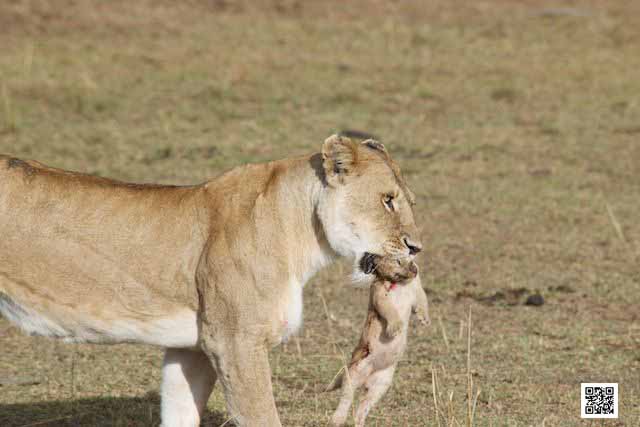
It was on a morning game drive in the Masai Mara when we spotted a lioness lying on the grass and holding something between her paws. It looked like a small animal and we thought it might be a hare or other small animal she was feeding on. But she was not feeding. She was holding it and looking around as in despair. As we came closer we saw that she was holding a little cup between her paws and the cub was not moving, it was obviously dead, only a few weeks old. The lioness started licking the cub, moving it with her paws, trying to revive the little body, but it wouldn’t come to life. Between her attempts to revive her cub she was looking up, opening her mouth as if she wanted to scream, but no sound was to be heard, it were silent screams of sadness and pain of the mother of a lion cub.
After a while she stood up, grabbed her cub with her mouth and carried it into higher grass. There she put her cub down and stood there looking at it until she moved away to a nearby tree. The lioness lay down under the tree, closed her eyes and rested. She stayed there for hours. In the late afternoon she got up and walked back to her dead cub. Then started eating her cub, maybe in some attempt to make sure that it goes back to where it was safe. After this final act of mourning the lioness left the site and walked back to the rest of the pride that had been waiting for her on a close by clearing. They had respected her need to mourn and she had taken the time she needed.
Nature will bring her straight away into estrus and she will have new cubs with hopefully a happier ending.
Ute Sonnenberg for www.rohyachui.com
How to Create an all Senses Photo Experience
19/07/12 19:26 Filed in: Photography & Art
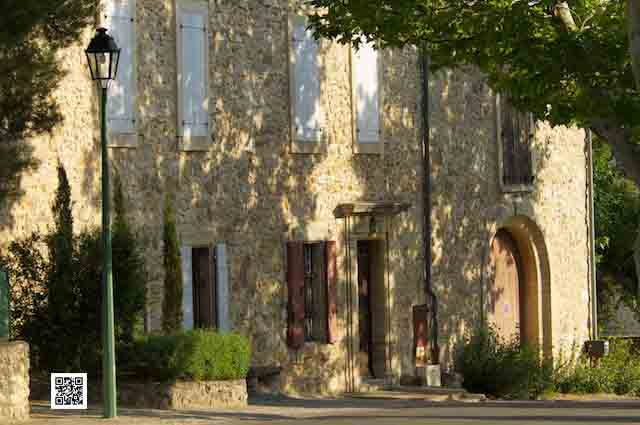
In earlier blog posts was explained how an image captures a moment with all what’s in the moment. It allows us at any given time even years later to recap what we saw, felt, smelled and thought. We can immediately tell where the photo was taken, who the people in the photo are, how we felt when we took the photo and a lot more what happened at that time. How would it be to intensify this memory by enhancing the aspects of the image with real smells and touches?
Print the photo from the holiday in the Provence, put some lavender in the room, play music from the region, make yourself comfortable on the sofa and have a glass of rosé while feeling that holiday again, 10 years later at any given place.
Sense photography with all your senses and enjoy travelling back in time to the moments you enjoyed.
Happy sensing.
Ute Sonnenberg for www.rohoyachui.com
Real Photos vs. Digital Photos, What Do We Want to Feel?
18/07/12 19:35 Filed in: Photography & Art

Not that long ago we usually came back from a holiday with a couple of film rolls, carrying them to the photo shop and wondering what would be on them. It was an exciting moment when we went back to collect our printed photos, leafing through them quickly; looking for that one image we definitely wanted to be a good one and being surprised what we all had photographed, because there was some time between taking the photo and holding the print in your hand. That has all changed. Nowadays we take a digital photo and look immediately on the screen of our camera how it looks like and quickly erase it when we think it’s not good enough to be seen by anyone else. Then we get home (or to the hotel), upload the images to the computer and some of them make it to be printed or even become part of a photo book, but most of them remain digital files.
Will some day the printing disappear completely? I don’t think so. Even Instagram images can be printed as stickers, small art prints and little books. The service is called Prinstagram and booming. It is just such a completely different feeling holding the print in your hand, putting the sticker with your own artwork on the fridge, giving a birthday card with an image you took to a friend than grabbing the smart phone and looking at the digital file. With a digital file only our eyes are feeling, with a print also our hands feel and the image becomes a multi dimensional sensual experience.
Happy feeling.
Ute Sonnenberg for www.rohoyachui.com
How to Show and Sell Your Photos and Artwork on the Internet
17/07/12 18:23 Filed in: Photography & Art | Technology & Gadgets
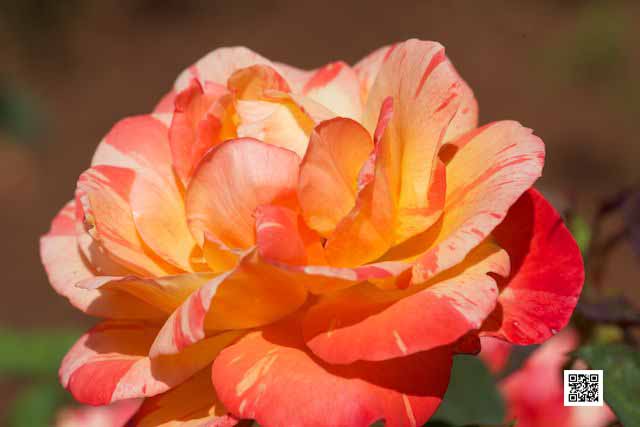
We all know about the obvious photo sharing options like facebook, Flickr, other social media and portfolio sites, but what if you want to sell your images as posters, postcards or other products? Maybe we need only to wait long enough and facebook will do that as well, but maybe not. There are websites that offer this service already and here are 2 of them.
The first is PhotoShelter. Photoshelter is as its name says a shelter for photographers. Not only can images be sold as prints and products, you can also have your own stock photo gallery and sell digital image files. The clients go to your website, browse the images and buy directly online. Photoshelter takes care of the financial part of the transaction and the copyright safety of your images. The services of Photoshelter are not for free. You pay a monthly or annual fee depending on the storage size you choose. Their services are open for professional photographers.
The second service provider is Artflakes. Artflakes is open to all artists and photographers. They are based in Berlin and offer great print services in good quality for deliveries all over the world. As a photographer you can sign up for free, upload images and set the price you wish for prints and products yourself (also in photoshelter you can set the price yourself). Artflakes is also a kind of artists network with following options and likes, but you don’t need to go around and like if you don’t like, but there are interesting artworks to discover.
Maybe these two websites can open new fields of activities for you. Have a look.
Happy discovering!
Ute Sonnenberg for www.rohoyachui.com
How to Make a Photo eBook that Looks Like Made by Apple
16/07/12 16:51 Filed in: Photography & Art | Technology & Gadgets
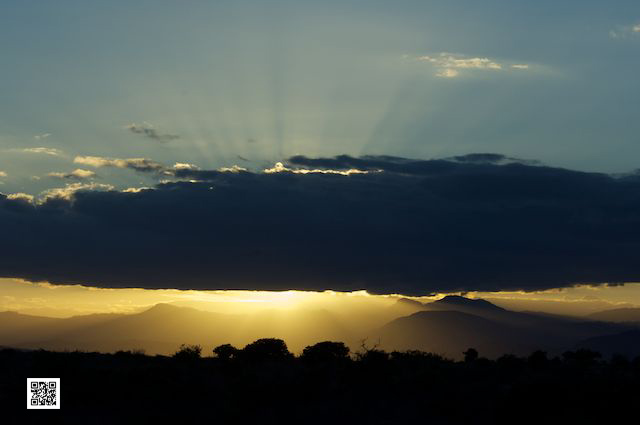
About 6 years ago Apple started offering the photo book feature in Aperture, that enabled users to create their own photo book, looking like a real coffee table book. It was like a revolution. All photo lovers could make their own book instead of the traditional photo album. It looked like a professionally published book, yet for an affordable price.
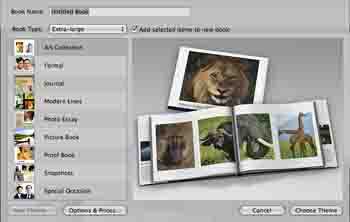
Only about 4 years later the iPad came out and its beautiful ebooks stole our hearts. Ebooks were nothing new, but these iPad ebooks were of a differnet kind. One could leafe through them like through real paper books and they would even make the sound of paper pages being turned. How great would it be to make your own Apple alike looking photo ebooks for a much lower price than the real photo books or even for free. With how many people could you share them simply on the digital way and on the go on their mobile devices. The developers were not sleeping and there are great websites that provide exaclty that service, creating your own beautiful photo ebook and of course also any other book you wish to create.
It all starts like any other book creating process with the book idea, writing what you want to write and choosing the images you want to publish. From there you can take different roads to the finished photo ebook through differnet online publishing services.
One of them is Blurb. Blurb allows you to make real paper books and iPad ebooks simply with templates, InDesign plugin or other bookmaking tools Blurb offers. Until now their iPad ebook service works like that. When you have already created and printed a paper book with Blurb they convert your book for free into an iPad ebook and you can even sell it via their book store. If you don’t have yet a paper book made with them, they request that you print one copy and the conversion into an iPad ebook is also for free. Check out their website. They are doing great things.

Another service provider is issuu. Create your book in word or as a power point presentation and save it as a pdf file. Then upload the pdf and issuu will create a beautiful online Apple lookalike readable ebook. The eBooks can be downloaded, if you alow that and the person who wants to download the eBook has to sign up with issuu. Signing up is for free and so is the eBook publishing service from issuu. You can use issuu to publish your photo books, amnuals, papers and other sorts of documents you wish to present in a beautiful way. Here some examples from my own website where I use issuu for itineraries and other documents.
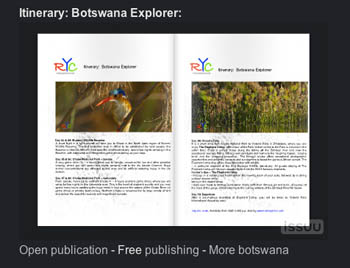
A third option is überflip. Uberflip makes great eBooks from your pdfs of all kinds of books including photo eBooks, which work on all digital devices, even with the page turning sound from the iPad. They offer a 60-days free trial and after that the service is not for free anymore. The basic subscription is $29.95 per month for a monthly upload of 5 eBooks. Here an example for an uberflip eBook. Readers of the book can download it as pdf without having to sign up before. Sharing tools for the most popular networks are integrated in the book-viewing page.
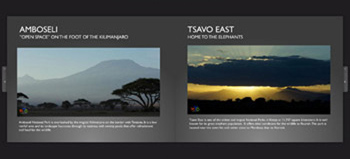
Have a look. Maybe you will find some inspiration for publishing your own creative work and sharing it with more people.
Happy eBooking!
Ute Sonnenberg for www.rohoyachui.com
5 Tips for Choosing the Right Photo Course
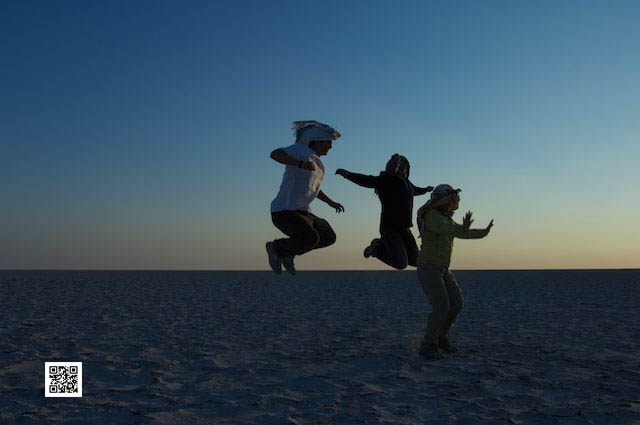
Fortunately we live in times of blooming creativity and plenty of opportunities to learn creative crafts like painting, sculpturing, cooking, photographing, gardening, app creating and many more. But it’s sometimes hard to find the right course and setting to learn and to get the most out of it. Here some pointers to help identifying a good course. They apply not only to photography, but also to courses in general.
- Make sure the course is about the students and not about the teacher. That means it stimulates the creativity of the students and enables them to develop their own style, guided by the teacher.
- Make sure the group is not to big or even go for individual training if it suits your purpose. Small groups provide more attention and space for individual questions and needs.
- Make sure you feel safe in the group. It’s a creative course and you will show yourself through your work. You will flourish and grow, if you feel safe to show your work and ask questions.
- Make sure you like the course environment incl. location, people, services and other facilities. That will stimulate your creative work and growth.
- Make sure it is fun. Fun makes us learn easier and learning enjoyable.
You might think, but I will know all these things only when I’m already in the course. Think back when you did courses in the past. Didn’t you have the right feeling about it already from the moment you booked it? Trust your intuition and you will have a great photo course, cooking classes, painting sessions or any other creating adventure you want to embark on.
Enjoy creating!
Ute Sonnenberg, www.rohoaychui.com
How Many Photo Equipment does One Need on Safari
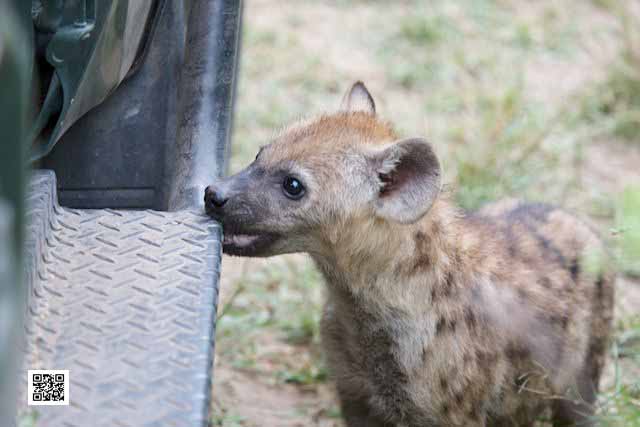
Many people go ones in their life on a safari and want to make sure they come home with lovely images. That puts a lot of pressure on the one who is responsible for the photography and one can easily end up buying all equipment possibly necessary, just to make sure to have it in case they need it. There is an overwhelming amount of equipment available and its really hard to make the right choice, but you got to make a choice and if its only for the luggage allowance on the flights.
If you are an entry-level hobby photographer, the best you can do is having a bridge type of digital camera with you with a good zoom and a relatively good speed. The biggest problem of the point and shoot cameras is their speed. They are often to slow to capture the moment and the animal is gone. Bringing that good bridge model to start with is a good choice for the less ambitious hobby photographer. No further photo equipment needed.
The more ambitious photographer with an entry level DSLR and interchangeable lenses gets already confronted with more choices. There are flowers and small animals that make great subjects, there are landscapes and there are the elephants on the water whole. For all three different situations are different lenses and the best thing to do would be to bring a macro, a wide angle and a zoom lens. But in reality one ends up not really using the macro lens when focusing on wildlife, unless macro is a specialty of the photographer and he/she will focus on small animals and objects. So, in general the wide angle and the zoom lens will be enough to bring. This lens choice can also apply to the more advanced and ambitious photographer. The next question is the tripod. A tripod is great for low light situations or night photography, but not essential for wildlife photography. A beanbag is the better choice. There is limited space in the vehicle, one needs to be flexible for the always-moving objects and night photography is not really happening. Get a beanbag.
The photographers with the more advanced cameras and lenses have a difficult task in making a decision. The beautiful fixed 400mm/500mm/600mm lenses are great, but they are also heavy, not flexible, need a tripod or monopod to be handled and require space. Already the transport on the international flight and definitely on the safari flight is challenging. But the main concern is their flexibility. In many places the animals are very close to the vehicles and the big lens cannot be used. So, one needs at least two cameras to have a more flexible lens on the other body to capture also these moments. If you want to bring all this great equipment, be prepared to have a private vehicle in order to manage it while being on safari. Also special arrangements for the transfers and flights might be necessary.
Whatever your choice will be, keep in mind to have a fast camera with a fast processing memory card, a minimum 400 mm zoom lens when shooting full frame and a beanbag. These essentials will serve you well when going out to shoot great photos of wildlife, yet having a relaxed safari and easy transportation.
Enjoy preparing for a great trip!
Ute Sonnenberg, www.rohoyachui.com
What to Think of When Photographing in Adventurous Places
11/07/12 16:05 Filed in: Photography & Art | Travel & Inspiration
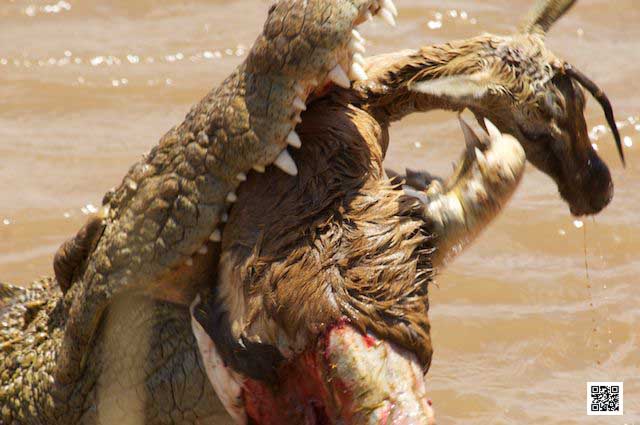
One doesn’t need to go on a photo safari in Africa to end up in adventurous situations. A big event in your hometown can be already enough or a sports event with mountain bikers flying around your head. Actually photographing in familiar places and situations can sometimes be even more dangerous than on exotic locations or in the bush. Familiar situations let us drop our guard easily and then we step backwards into a gutter, fall of a wall, get equipment stolen or misjudging how many things we can do at the same time and loosing it. Well, making mistakes of this kind can be annoying, inconvenient and sometimes painful, but not so quickly life threatening. Making mistakes in the bush and in unfamiliar cultures can have larger consequences. But all boils down to watch your back and if you can’t do that yourself, get somebody to do it for you.
When we look through the viewfinder or on the screen of our camera we get drawn into the photo we want to take. All our attention is on photography and we hardly see and hear what is going on around us. We somehow block out the world in order to focus on what we see and capture. The situation is similar to listening to the iPod while riding a bicycle on the streets or sending a sms while driving a car.
For that reason, photographers in war zones and other dangerous places have guides with them and sometimes security guards to make their work possible. In the bush, one if not familiar with the environment, has a ranger and often a tracker with them. They find the animals and they take care of the safety. It might sound silly to remind people of “do not step out of the vehicle”, but unfortunately they forget and do it to get closer to the lion for a better shot. That only provides dramatic photos to the people who witness the moment and often ends the life of the other person. One might be tempted to think, how can you be so stupid, but be aware that being in the bush and seeing these animals can mix up very much someone’s mind and emotions. People don’t realize at that moment where they are and the animals look just like on TV and reality and fiction become one and fatal.
Always be conscious where you are, what is going on around you, have somebody to cover your back and have a guide when unfamiliar with the surroundings. Listen when the guide tells you to stay in the vehicle. Walking the streets of New York is different from walking the roads of the Masai Mara. Both are safe as long as you know the rules and follow them.
Be conscious and mind your guard. Bring jaw dropping beautiful images of your trip home and not images of yourself that could make the front pages.
Happy snapping!
Ute Sonnenberg, www.rohoyachui.com
How to Plan and Book Your Photo Safari
10/07/12 15:15 Filed in: Photography & Art | Travel & Inspiration

First things first, how do you know you want to go on a photo safari? Did somebody ask you to join them or did you think lets do something different this year or were you always interested in wildlife and now you can’t wait to see it yourself? By answering this question you set the first step to choose the right destination, accommodation and mode of transport.
When you join somebody everything is usually already decided and arranged. You only step in.
When you think of doing a holiday just in a different way, than you should make a list what you want to see, experience and what is important to you regarding standard of accommodation and transportation. You might like to do a combination of safari, culture/lifestyle and beach to get an impression of Africa’s diversity. For that purpose you should choose a safari destination that offers excellent sightings, easy access and comfortable accommodation. You will travel quite a lot during that holiday to see and experience all the different places and activities, so easy access is important to not loose time and energy. The safari will be only one activity you are doing during the trip, so you want the best, preferably seeing the Big 5 within a few days before moving on to climb a mountain or to enjoy the beach. For that purpose a fly in safari to a Private Game Reserve or great areas as the Masai Mara and the Okavango Delta will be the best options. Check what vehicles the camp/lodge is using and if trained drivers/rangers are available. Be aware that travelling in Africa is different from other places. If you think about booking it yourself on the Internet you can make big misjudgments in planning distances, travel time, accommodation and game drive quality. Rather get somebody to help and advice you with that.
When you want to go on safari and only on safari to enjoy photographing the great wildlife, your photo safari options get broader. You can choose for a variety of wildlife areas, even with different countries in one trip, depending on the time you have available. There is no need to rush things and plenty of opportunity to see the very diverse national parks and reserves with different and rare animal species. For this kind of photo safari it is great to have your private 4x4 Jeep with an allocated driver/guide for the entire stay. It provides the ultimate bush experience and allows you to go on game drives when you want and for how long you want. You got the freedom to make your own plan. Also for this kind of safari the same advice applies. Get somebody to help you with the planning and booking. Distances in Africa are measured in hours, not in kilometers and not knowing the rules of the bush can get you in difficulties. Having your private vehicle can be combined with simple camping or 5 star lodges, depending on the budget for the trip. It demands more time through travelling by car between the wildlife areas, but with the opportunity to see more of the country.
Last but not least, ask yourself what animals you want to see. In some areas it’s easy to see the big cats in others to see elephant. Think about it when you plan the trip, that you don’t end up in an area where leopards are hardly see with the idea to photograph them.
Happy planning.
Ute Sonnenberg, www.rohoyachui.com
Dare to Be Different, Think Different and Photograph Different
09/07/12 15:04
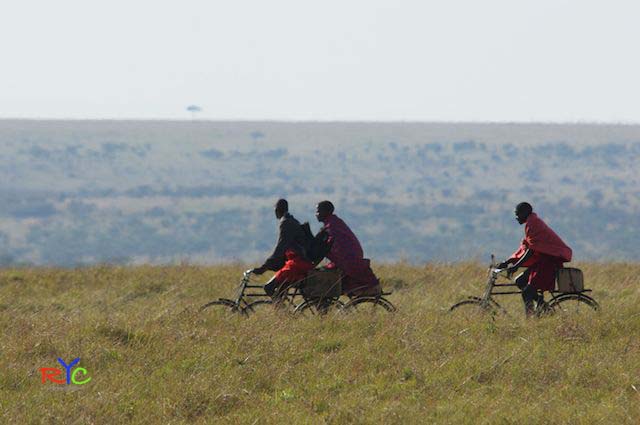
We all might have experienced situations in classrooms, workshops, trainings, clubs or online platforms where we felt insecure about our opinion, artwork, knowledge or homework when asked to present it to the group. Nobody wants to be rejected or criticized badly in public. That’s the moment we might consider to present artwork, papers or opinions we think the others want to see and hear. The price we pay for that is our own identity and repressing our own creativity, strength and growth. Going with what the crowd expects might seem the easier way of doing things in the first place, but on the long run creativity will die and with it joy, satisfaction, motivation and success. It’s not an easy decision to make and the following example shows what a pressure can be put on the shoulders of a photographer and how one can also crumble under its weight.
The photographer Joe Klamar was asked to photograph portraits of the US Olympic Team and when his images went public a storm of negative criticism hit them and him. Yes, they do not look like adverts and one does not expect them to be in magazines, but would the reaction had been the same when the images would have been shown in a gallery exhibition? Maybe “we” expect to see advert like images when we read that there are portraits of the US Olympic Team and then we don’t see advert like images, but art. This can be experienced as controversial and his work definitely triggers something when looking at it, but is it not what art is supposed to do?
In the first place Joe Klamar responded to the criticism that he was not shooting a Nike ad. A few days later he explained that he had not the right equipment with him when he was asked to do the shoot and that would explain the image quality. Had the pressure piled up and did AFP, he is working for, ask him to give this statement?
His images unleashed a storm and one should ask why such a storm came up. Somebody choose his own way of photographing the subjects and his way was different from the usual. Then the “usual” hit back and wants to make sure that the one who dared to be different gets drawn back into the crowd.
Would Apple have become Apple by allowing this to happen? Dare to be different, think different and photograph different and find some inspiration here.
Ute Sonnenberg, www.rohoyachui.com
The Day We stop Using Facebook
06/07/12 11:53

As all living organisms start dying the moment they are born also a social network as facebook does that. A human body produces new cells and old cells are dying simultaneously. In the beginning there are more new cells produced than old cells are dying. Somewhere along the road more cells die than new cells are produced and eventually the body dies. Depending on how a human body lives this process can be delayed or accelerated. The same happens with facebook and any other social media, but facebook might accelerate the cell dying process, if it continues it’s current strategy.
You might remember the days when a “like” was still a “like” and when your post was shown on the stream of all your friends and fans and not only the ones fb choose. These were the times when more new cells were produced than old cells died, in fb terms when the member growth and activity was huge. Then came the moment that the organism facebook got contaminated by the good life. Investors and big money got involved and a “like” ended being a “like”. It was the moment that the “like” was everywhere. When you have a complaint, you can “like” it, you can “like” your own profile and you can “like” the shoes you saw in the online shop. An overkill of “like”s and it’s even chosen for you what you have to like, because facebook controls what you see in your stream and to which online shop you are directed. To stay with the human body and cells, let’s call it a tumor had nestled in the organism. A tumor needs food. He eats cells. Facebook is now a public company and all the investors need to get fed. One of the things to come is the cooperation of facebook with online marketing companies who place cookies when somebody visits a website for red shoes. By visiting the website for red shoes facebook gets the information that you were looking for the red shoes on this website and you will receive adverts on your facebook profile from that very red shoe company. For how long will facebook members tolerate that? Will they stand up just like they did with the change of the contact email address in the fb account?
It is an interesting process to observe and learn and it applies to all organisms like companies, human bodies, organizations and social networks. Facebook is just like a great example case study that provides insights in when a body turns into dying more than producing new cells with the very interesting question when it will die as an organism, or will it not? Medicine does great things nowadays. They can almost reverse everything or at least delay natural processes to a great extend. Let’s see and learn.
Ute Sonnenberg, www.rohoyachui.com
Simple and Easy World Language Images
05/07/12 16:33
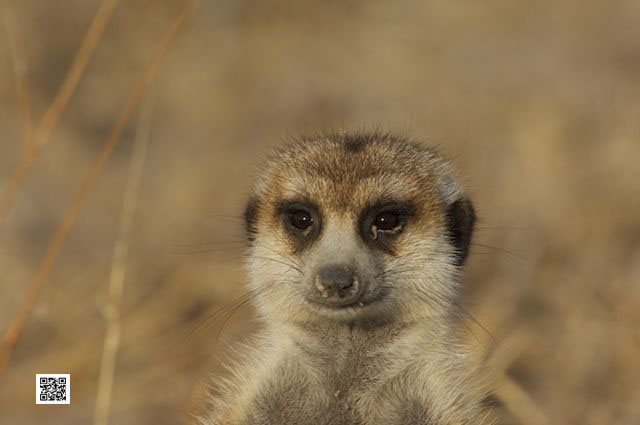
There have been many attempts to find a world language everyone is speaking to make communication easy around the world. But none could really make it, because they were again words and grammar and spelling and our mind got already enough to digest every day. Will images be the solution and the future world language? Or maybe they are already. When we want to tell the family how our holiday was we post pictures onto the social networks and all our friends around the world will understand too that we had a great holiday, although they do not speak Spanish or French or Chinese.
Imagine a future scenario. School children have all access to the Internet and learn math through online platforms together with all children anywhere in the world. They communicate through images and teachers in the classrooms guide them through the process of learning in their own traditional language. They grow up bilingual, their traditional language and the “image language”, which actually nobody has to learn; it’s already there. It could be that they all wear Google Augmented Glasses and just look at a formula or an object and a whole bunch of children from China, Kenya, America and Portugal try together to solve the math problem. Or somebody wants to share what bothers him/her and does that with an image. Somebody else 10,000 km away sees the image and answers back with an image as consolation and support. The first person looks at it and is touched to tears, happy and grateful, sending back a thank you image. All without words, grammar and spelling, it’s all in the picture. We just need to use it consciously as a communication tool and not only for great travel offers, but for essential human communication to conquer globalization and growth. It’s time for innovation and it looks like the people are ready for it, only the technology needs to catch up.
Happy chatting or will we call it imaging?
Ute Sonnenberg, www.rohoyachui.com
Early Birds get the Best Photos
04/07/12 09:23

When photographing outdoors we rely on the natural light and how it changes during the course of the day. The light just after sunrise is probably the most beautiful light a photographer can work with. It is warm, soft, gentle, promising, with still a whole day ahead, clean, innocent and pristine. In this light every subject from the model to the lion looks innocent, warm, gentle and lovable. Nothing has spoilt their beauty yet, the beauty of the light and the subject. Further in the day the light becomes harsh or dull, depending on the weather, contrasts are missing and subjects are over or underexposed. It’s hard working to get something look good. Towards sunset the light makes another major change. As if it wants to get rid of all what has happened during the day it’s cleaning and softening itself to be calm and gentle before setting for the night.
The hour just after sunrise and the hour just before sunset are called the golden hour. They are the best time for photographers. For those who find it difficult to get up early the light before sunset will be fine, but the best light is the light in the early morning. It’s hard to say why, but it might be the promise of a day to come what makes the light the better one and it will reflect in the images as well.
Choose your light and shoot away.
Happy shooting early birds.
Ute Sonnenberg, www.rohoaychui.com
How to Photograph Successfully Birds
03/07/12 19:46
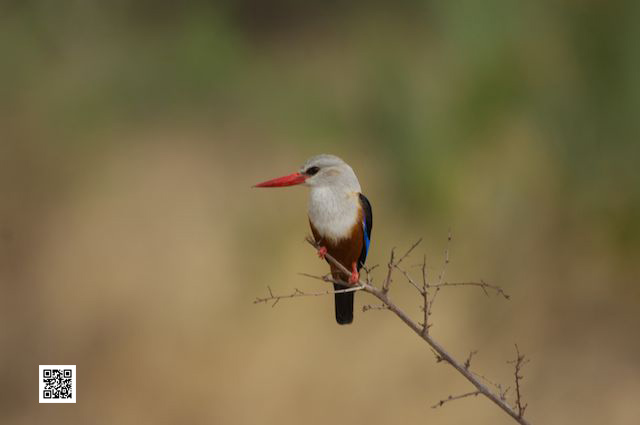
What is a typical bird photo? An empty branch or a piece of blue sky. They are so incredibly fast that it is so hard to get them nicely in the picture.
First things first. Put your camera away and observe the birds, any birds. Learn about their behavior. When are they doing things, how are they doing things, what is an indication for a following movement, how does a bird show that he will take off.
Next. Get a feeling for the birds. Spend time with them to sense when they are calm and relaxed and when they are restless, anxious or stressed. That will influence their behavior and the way you can photograph them.
Then get your camera and practice. Sit with the birds in your garden or in the park and photograph them. Don’t think about composition or light; just photograph any bird that comes along. By doing that you will bring your observations together with the actual process of photographing and this synergy will result in great bird photos.
So in essence: observation, sensing, practicing.
Enjoy these great animals. Happy snapping.
Ute Sonnenberg, www.rohoyachui.com
Move the Photographer for the Eye Catching Moment
02/07/12 16:30

Sometimes on family occasions someone gets the idea, we need to take a photo. Everybody has to come together and stand in front of the house or any other great background the idea person choose. Then the group has to move to the left or right, people have to switch positions and move again, because now the light has changed. These can be a very annoying photo shoot everyone just wants to get over with. But what about moving the photographer? The photographer is only one person to move. And by moving the photographer new angles will come up with new light situations and probably more interesting photos. Interesting enough the photographer tends to stand still, nailed to the ground and wondering why the photo wouldn’t work instead of changing his/her position. That happens not only with family photos. It’s the same with buildings, wildlife, holiday photos, actually with all sorts of photos we take. Sometimes something caught our eye and we want to capture exactly that, but the light has changed until we got our camera ready or somebody walked into the composition. We definitely have to move to get anything out of it then. So it probably boils down to being fast enough to avoid moving the photographer around. But maybe only in these eye catching situations. With the family photo it might be, because nothing had caught our eye yet and by positioning the people we try to create an eye catching situation or with famous buildings we think we need to photograph them, although they do not catch our eye yet.
That means in essence that the photographer is in the absolute right position when something catches his/her eye and doesn’t need to move, shouldn’t move at all. If there is no eye catching moment, the photographer has to move until he/she experiences and eye catching moment with the subject and then they can stop moving and start shooting.
Happy eye catching.
Ute Sonnenberg, www.rohoyachui.com
